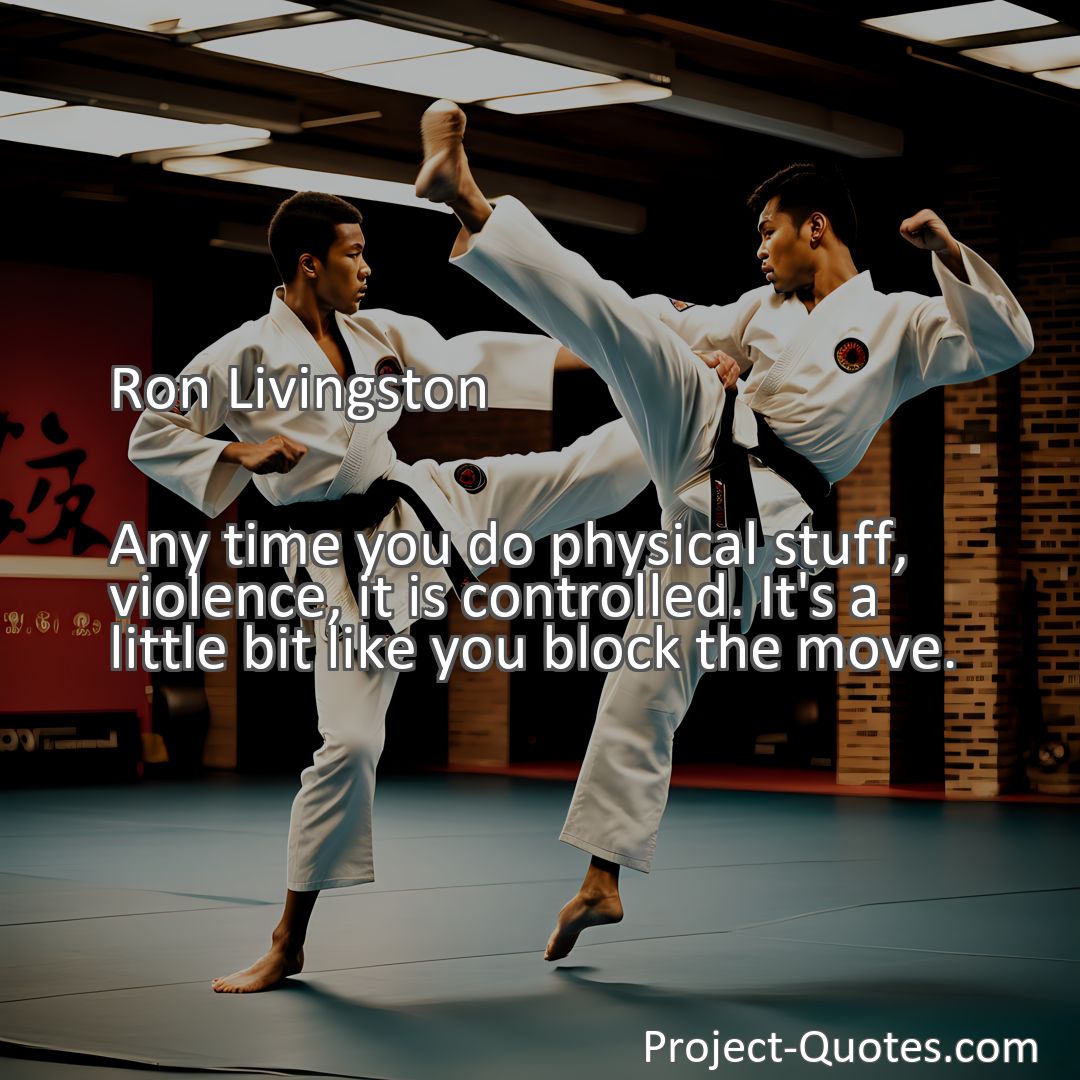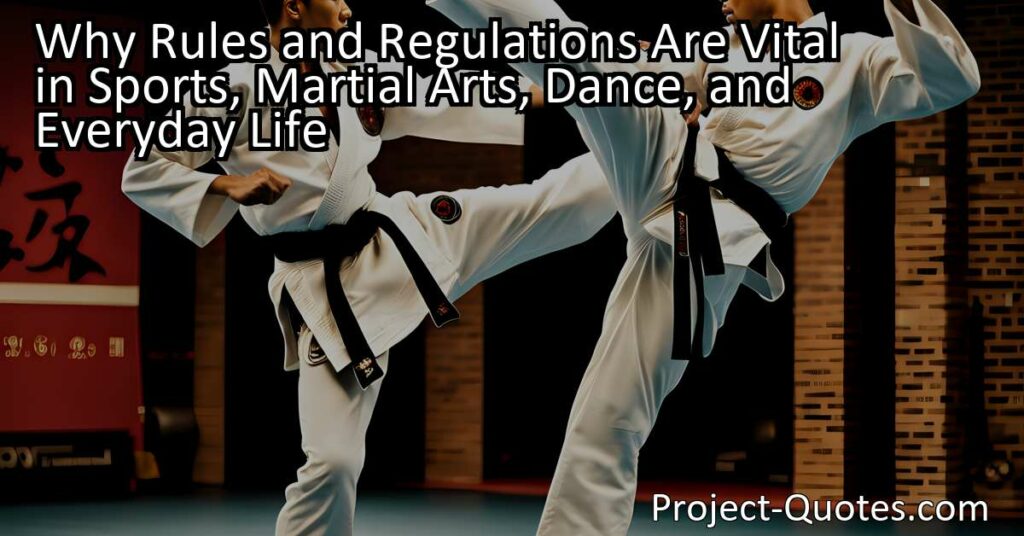Any time you do physical stuff, violence, it is controlled. It’s a little bit like you block the move.
Ron Livingston
The title “Why Rules and Regulations Are Vital in Sports, Martial Arts, Dance, and Everyday Life” explores the importance of boundaries and regulations in physical activities. Whether it’s playing sports, practicing martial arts, dancing, or even everyday interactions, the establishment of rules and regulations fosters a controlled environment that promotes safety, fair play, personal growth, and enjoyment. Without these guidelines, physical activities can easily turn chaotic and potentially harmful, but with them, individuals can engage in these activities without resorting to violence.
Table of Contents
Meaning of Quote – Any time you do physical stuff, violence, it is controlled. It’s a little bit like you block the move.
Have you ever wondered why physical activities like sports or martial arts involve rules and regulations? Well, there’s a famous quote that says, “Any time you do physical stuff, violence, it is controlled. It’s a little bit like you block the move.” This quote holds a lot of truth and can help us understand the importance of boundaries and regulations in physical activities.
Physical activities, such as sports, martial arts, and even dance, require control and discipline. Without control, these activities can easily turn into chaotic and potentially harmful situations. Imagine playing a game of soccer without any rules or referees to ensure fair play. Players could push, shove, or even resort to violence to gain an advantage. However, by implementing rules and regulations, we create a safe and structured environment that allows individuals to engage in physical activities without causing harm to themselves or others.
In sports, for example, each game has a set of rules that all players must follow. These rules dictate how the game is played, what actions are considered legal or illegal, and the consequences of breaking those rules. By having these guidelines in place, it ensures that the physical elements of the game remain controlled and fair.
Let’s take a closer look at the concept of blocking the move. In sports like football or basketball, a defensive player can legally block an offensive player’s path or attempt to score. This act of blocking requires physical contact, but it is not meant to be violent or harmful. Instead, it is a strategic move to prevent the opponent from advancing. This controlled physical interaction, within the boundaries of the game’s rules, allows for competition and challenges while minimizing the risk of injury.
Martial arts, on the other hand, specifically focus on the art of controlled physical movements. Many martial arts disciplines emphasize self-defense, discipline, and respect. In practices like karate or taekwondo, students learn various techniques and forms to defend themselves or subdue an opponent. However, these techniques are not meant to be used recklessly or violently. Instead, practitioners are taught to utilize their skills with control, precision, and only when necessary. This controlled approach to physical contact ensures that martial arts remain focused on self-improvement, discipline, and personal growth rather than promoting violence.
Beyond sports and martial arts, the concept of control can be applied in various other physical activities. Dance, for example, requires precision, coordination, and control of movements. Choreographed routines rely on dancers’ ability to synchronize their actions and maintain control over their bodies. Whether it’s ballet, hip-hop, or contemporary dance, the coordination of precise movements creates a visually stunning and controlled artistic expression.
Outside of organized activities, the idea of controlled physicality can also be seen in everyday life situations. Let’s say you accidentally hit your sibling while playing. In a controlled environment, you would immediately apologize, ensuring that no harm was done. This act of acknowledging the accidental contact and expressing remorse demonstrates the importance of control and understanding within physical interactions.
Furthermore, the concept of controlled physicality extends beyond individual actions. It also encompasses how society establishes laws, regulations, and codes of conduct to maintain order and prevent violence. These social structures are in place to protect individuals and ensure overall well-being. For example, traffic rules and regulations control how vehicles move on the road to prevent accidents and chaotic situations. Without these regulations, driving could become dangerous and even life-threatening.
In conclusion, the quote “Any time you do physical stuff, violence, it is controlled. It’s a little bit like you block the move” highlights the significance of control, discipline, and structured boundaries in physical activities. Whether it’s in sports, martial arts, dance, or everyday life, the establishment of rules and regulations fosters a controlled environment where individuals can engage in physical actions without resorting to violence. By embracing and understanding the importance of control in physicality, we can promote safety, fair play, personal growth, and ultimately enjoy the many benefits physical activities have to offer.
I hope this quote inspired image brings you hope and peace. Share it with someone who needs it today!


